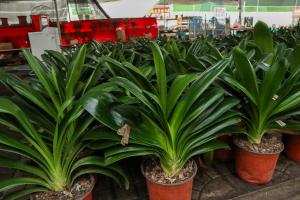Can You Train Tomato Plants Horizontally?
Tomato plants are a popular choice among gardeners, thanks to their flavor and versatility in the kitchen. However, growing tomato plants can present its own set of challenges, especially when it comes to providing adequate support for their growing vines. One solution that has gained popularity in recent years is the practice of training tomato plants horizontally. But can you really train tomato plants to grow sideways? Let's take a closer look.
What is Training Tomato Plants Horizontally?
Training tomato plants horizontally involves bending the stem of the plant so that it grows along the ground rather than up. This can be achieved using a variety of methods, such as staking, trellising, or the Florida weave technique, which involves weaving string between plants to support the branches. As the tomato plant grows, its branches are guided along the support structure until they reach their desired length. This technique can be especially useful for plants that have a tendency to grow too tall, as it allows for better air circulation and can prevent them from falling over due to their own weight.
What are the Benefits of Training Tomato Plants Horizontally?
There are several benefits of training tomato plants horizontally. One of the most significant benefits is improved air circulation, which can reduce the risk of fungal infections and other diseases. Additionally, horizontal training can help to increase the number of fruit that the plant produces since it allows for more branching and creates more space for the fruits to grow. Finally, training tomato plants horizontally can make it easier to harvest the fruit and can reduce the risk of damage to the plant since the vines are not as tall.
How to Train Tomato Plants Horizontally?
If you are interested in training your tomato plants horizontally, there are several methods that you can use. The first step is to choose a support structure that will allow you to guide the plant's branches along the ground. Some popular options include bamboo stakes, tomato cages, or trellises. Once you have chosen your support structure, you will need to begin guiding the plant's branches along the ground. This can be done by gently bending the stem and using clips or ties to secure it to the support structure. As the plant continues to grow, you will need to continue guiding the branches along the structure, making sure to avoid any obstacles or damage to the plant.
What are the Drawbacks of Training Tomato Plants Horizontally?
While training tomato plants horizontally can offer many benefits, there are also some potential drawbacks to consider. For example, it can be more time-consuming to set up and maintain the support structure needed for horizontal training. Additionally, this technique may not be suitable for all tomato varieties, as some plants may not respond well to being bent or trained in this manner. Finally, horizontal training can make it more difficult to manage pests since the fruit is closer to the ground and may be more vulnerable to damage.
Conclusion
Overall, training tomato plants horizontally can be a great way to maximize your plant's yield and reduce the risk of disease and damage. Whether you choose to use staking, trellising, or another method, it is important to choose a support structure that is sturdy and can withstand the weight of your plants. Additionally, it is important to monitor your plants closely and adjust your support structure as needed to ensure that they continue to grow in the desired direction. With the right care and attention, you can enjoy a bountiful harvest of delicious tomatoes from your horizontally trained plants.

 how many times do yo...
how many times do yo... how many planted tre...
how many planted tre... how many pine trees ...
how many pine trees ... how many pecan trees...
how many pecan trees... how many plants comp...
how many plants comp... how many plants can ...
how many plants can ... how many plants and ...
how many plants and ... how many pepper plan...
how many pepper plan...































